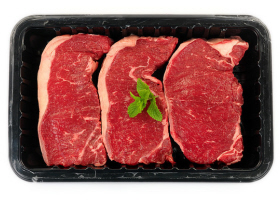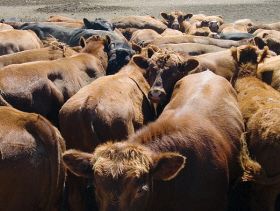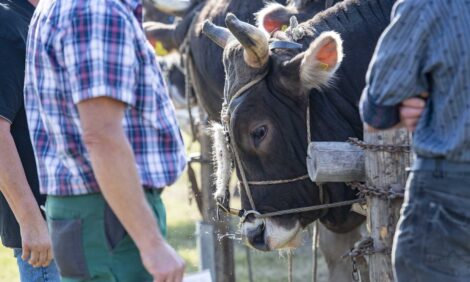



New Research: Time to Switch Antibiotic Resistance Focus from Use to Environment
ANALYSIS - Scientists have discovered a “startling” lack of resistance genes in meat, and their new research suggests the need to switch focus from reducing antibiotic use to traffic from humans to animals, and back to humans via the environment.Meanwhile, in soil and faeces samples from cattle pens they found genes resistant to a powerful “last resort” class of antibiotics called carpabemens that aren’t used in the livestock industry. These genes may have jumped from humans or companion animals to livestock, or could even be present at low levels in the wider environment.
 Together, the results, which were the first study to use new methods to track antibiotic resistance, published in eLife suggest researchers and policy-makers need to switch focus to combat the growing problem of drug-resistant bugs.
Together, the results, which were the first study to use new methods to track antibiotic resistance, published in eLife suggest researchers and policy-makers need to switch focus to combat the growing problem of drug-resistant bugs.
A current focus for policy-makers is to reduce antibiotic use in livestock to curb the spread of drug-resistant bugs. The team urges that traffic from humans to animals, and back to humans via the environment, should be a new focus for research.
“Our findings clearly show that the spread of resistance is not a one-way street from animals to humans and that, as new evidence emerges, we need to shift focus,” says lead author Noelle Noyes from the Microbial Ecology Group at Colorado State University.
The lack of resistance genes in post-slaughter meat samples was a big surprise for the scientists, forcing them to rethink the view that it is only antibiotic use that increases resistance.
“While we expected to find fewer bacteria and thus resistance genes, the absence of resistance genes in these samples was still a bit startling,” says co-principal investigator Paul Morley from Colorado State University.
Strict, technology-driven food safety measures prevent pathogenic bacteria like Salmonella and E. coli O157:H7 from entering the food supply chain. They include high heat, steam, organic acids and cutting off parts of the carcass at risk of harbouring pathogens.
“Our findings suggest the gauntlet of measures to kill pathogens also protects the consumer from antimicrobial resistance genes because they too are unable to survive,” says co principal investigator Keith Belk.
“We need to expand our thinking in this area, and develop new and improved methods to better understand how antibiotic use drives a complex network of genetic modifications within entire microbial communities,” he says.
Environmental routes of exposure are much harder to trace and have been largely overlooked by researchers and policy-makers. While many of us never step foot on working farms, we are physically connected to agriculture via wastewater run-off and windborne particulates. The scientists suggest investigating wind patterns and water flow to see if, and how, resistant bacteria may be disseminated, and how far.
“We may find that such dissemination is very limited geographically, or we may find that resistant bacteria can travel long distances if they find the right currents or the right waterways. In either case, this would be very important information from a public health perspective,” says Noyes.
 The researchers collected samples from 1,741 commercial cattle. The study started in feedlots, where intensively farmed cattle are moved after grazing.
The researchers collected samples from 1,741 commercial cattle. The study started in feedlots, where intensively farmed cattle are moved after grazing.
A feedlot consists of outdoor pens where cattle are fattened during their final months of life. Samples were also taken during slaughter and from market-ready products.
No previous studies have tracked antimicrobial use and resistance right through the beef production process. The team found no resistance genes to any bacteria in market-ready beef products.
They did discover changes to antibiotic resistance genes in the guts of cattle during their time in the feedlot. The changes could be due to the use of antibiotics in feedlots but could also result from adjusting to a high-energy diet or from the cattle’s maturation from adolescent to adult.
The diversity of genes in their ‘resistome’ decreased. A resistome is the collection of antibiotic resistance genes in a given environment, be it the gut of a cow or a sample of soil or water. The decrease could present an opportunity to suppress it further during the feeding period and move towards the lowest risk possible.
“The next challenge is to identify what is really driving the change we saw and to determine whether these drivers need to be modified and, if so, how,” says Noyes.
“Any changes need to be balanced with the ability of agriculture to produce enough safe, affordable food for a rapidly changing population. What concerns us most is ensuring that rational, science-driven discussion drives progress,” she says.
Further Reading
You can view the open report titled Resistome diversity in cattle and the environment decreases during beef production published in eLife by clicking here.



